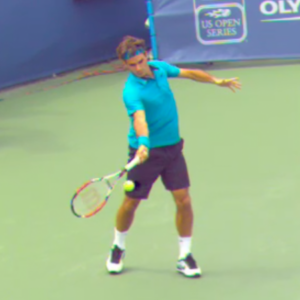Sport and Exercise Science Section – An Introduction
Sport & Exercise Science
Applied Sport Science in Tennis
Sport Science is a commonly used term these days. But what does it mean? In general, it is a multi-discipline endeavor that seeks to understand the function of the human body during sport and exercise activities. It encompasses several specialties including Biomechanics, Physiology, Motor Control, Motor Development, Psychology, and Nutrition.

While the basic research form of Sport Science seeks to understand body function in sport and exercise, the applied form of Sport Science seeks to utilize and expand the findings of the basic research in the field, while at the same time improving the performance of athletes. The concepts of Sport Science should be mandatory knowledge for coaches in tennis.
The purpose of this section of the TCPR Knowledge Base is to present the concepts of the core Sport Science disciplines (Biomechanics, Physiology, Motor Control & Development) with particular emphasis on their integration in application to tennis player development. An understanding of how the human body functions during tennis play should be the foundation of all training programs – from technique, to movement, to teaching methodology, to fitness programs and beyond.
Sport Science Section Contents

Biomechanics – This discipline is covered in detail in two other sections (Tennis Biomechanics and B.E.S.T. System Mechanics). It will be included here only where it integrates with the other disciplines.


Physiology – This discipline can be subdivided into Functional Physiology and Muscle Physiology. Functional will cover Bioenergetics along with acute and chronic adaptations to training protocols. Muscle will cover the physiological properties of muscle as they relate to stroke production and movement on the court.

Motor Control & Development – These disciplines are critical to those who coach tennis. Motor Control will cover neural recruitment and sensory feedback. Motor Development will focus on skill acquisition and conversion into motor programs. Particular emphasis will be placed on how these concepts are relevant to building stroke mechanics and movement patterns.
Integration – In moving to the ball or hitting the strokes, the constituent properties of each Sport Science discipline are integrated in a fascinating way. This integration will be used to describe the skills in tennis through a purely Sport Science looking glass. Readers will never look at hitting a forehand the same.
Applied Research and Testing – This section will present our work in applying Sport Science to tennis player development. This includes development of testing protocols based on emerging technologies, interpretation of results, and intervention methodology to enhance the performance of tennis athletes.




